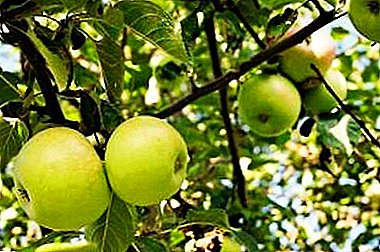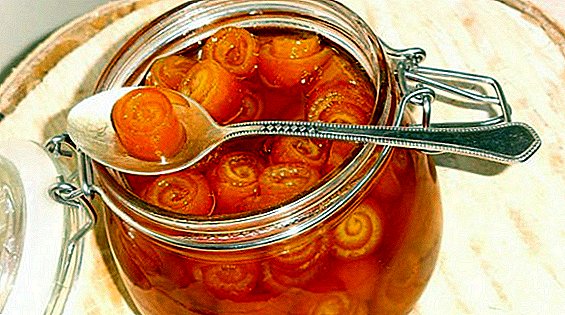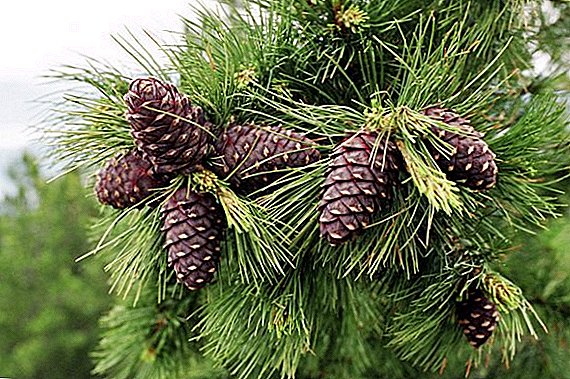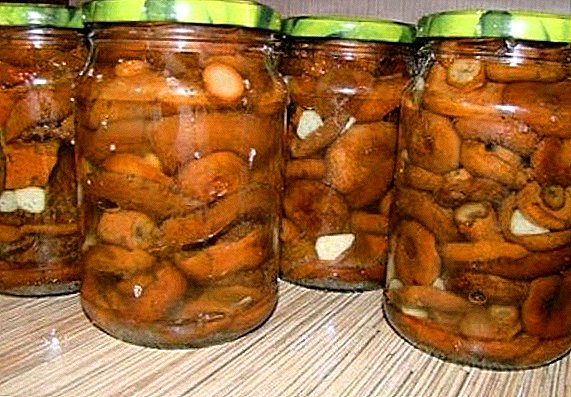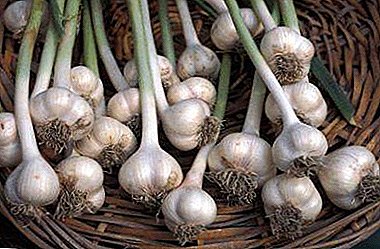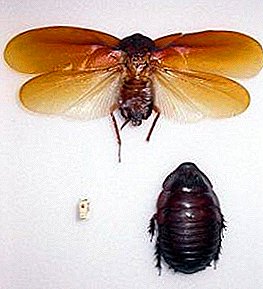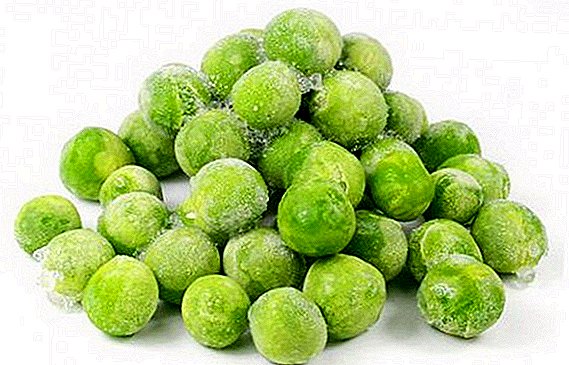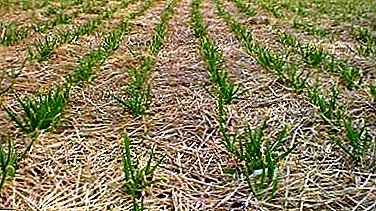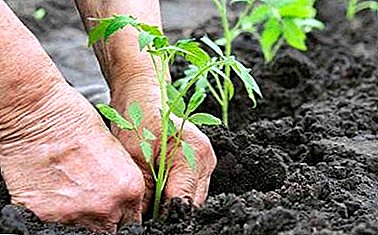
Planting tomatoes in open ground - one of the important tasks for the gardener. The future harvest depends on the correctly chosen site, the method and the planting scheme, the necessary "neighbors" and the predecessors of tomatoes.
Planting a tomato in open ground has certain characteristics, without the knowledge of which it is difficult to grow a good crop.
This article describes in detail the secrets of a rich harvest: the nuances of planting tomatoes in open ground and the features of caring for them.
Ways to plant and care for vegetables
Preparing for planting seedlings
The most common way of planting a tomato is planting seedlings.. Before planting it in open ground, the seedlings should be “tempered”. To this end, the boxes with plants for 15 - 20 days are carried out on the street, where they stay for a certain time (from 2 hours to 10 hours daily).
The minimum period of hardening is 3 days, but it is better to allocate this stage more time: it only has a beneficial effect on the adaptive abilities of young plants. 10 days before planting the seedlings in open ground, watering should be reduced, and within a week they should stop altogether, but on the eve of the planting day, the young shoots are poured with water.
The tomato is watered once more, you can immediately tie it to a peg, so that the fragile stem does not break from the wind. Care includes the following main points: watering, fertilizing, loosening the soil, hilling, the formation of the bush.
How to properly and at what distance to put the seeds from each other?
 Recently, among gardeners, the seedless method of planting tomatoes has become increasingly popular - sowing seeds immediately in open ground. They must be processed before sowing.: put in a fabric bag and immerse it in a solution of potassium permanganate (1 g of manganese for 1 tbsp of water) for 15 to 20 minutes, then rinse with running water. You can also soak them for 12 hours in a solution of growth stimulant.
Recently, among gardeners, the seedless method of planting tomatoes has become increasingly popular - sowing seeds immediately in open ground. They must be processed before sowing.: put in a fabric bag and immerse it in a solution of potassium permanganate (1 g of manganese for 1 tbsp of water) for 15 to 20 minutes, then rinse with running water. You can also soak them for 12 hours in a solution of growth stimulant.
Seeds are sown immediately in the wells (the distance between them is 30 - 40 cm, between the rows - 60 - 70 cm): 3 - 4 seeds are placed in moist soil to a depth of 3-4 cm. The soil is compacted with a palm for better contact of the seed with the ground. When 2 true leaves appear at sprouting in the hole, one well-developed shoot is left, all the rest are removed. Caring for such plants is identical to caring for seedlings.
What should be considered when disembarking to get a good harvest?
For proper planting of tomatoes, consider the following:
- Tomatoes are heat and light-loving plants, for them it is necessary to select well-lit areas, protected from wind and drafts. Also, the land should not be swamped or in lowlands: a constant accumulation of moisture will contribute to the spread of fungal plant diseases, the occurrence of putrefactive processes of the root system of tomatoes.
- The soil in the tomato plots is usually double digged (autumn and spring) to saturate it with oxygen, giving it looseness, softness and harvesting the roots of weeds. When digging, you can make fertilizer in the soil for its enrichment (for example, mullein, superphosphate, potash salt). And a week before planting the seedlings, I recommend treating the soil with a solution of copper sulphate for disinfection.
- Another rule: you can not plant tomatoes on the same plot for two years in a row. The minimum gap in the cultivation of tomatoes in the same area should be 3 to 4 years.
- Due attention should be paid to the holes in which the seedlings will be planted. Each of them should be dug to a depth of 20 - 25 cm. At the bottom of each can be placed as organic (humus, manure, ash, banana peel, eggshell, onion peel, yeast), mineral (superphosphate, magnesium sulfate), and complex drugs (Kemira Lux, Kemira Universal).
- It must be remembered that one tomato bush occupies an average of 0.3 square meters, so before sowing tomatoes for seedlings, it is necessary to calculate how many bushes can be planted on the plot so as not to throw away extra seedlings.
Plant placement patterns
- Planting schemes for tall tomatoes.
- Square nesting method. With this method, plants are planted in the corners of an imaginary square, forming a kind of nest. The distance between the bushes is 50-60 cm, and between the squares in the transverse direction, 80 cm (in this gap is a furrow for irrigation). This scheme provides the convenience of processing between rows, facilitates the process of loosening the soil and the destruction of weeds.
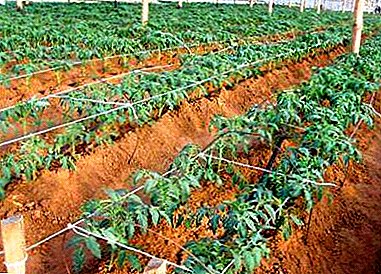 Tape-nested method. Another good option for placing tomatoes at planting is tape nesting. The essence of this method consists in digging out through 100 cm of ribbons - trenches, along the edges of which on both sides (40 cm) the bushes of tomatoes are planted, one opposite the other. The distance between the bushes in a row is 70 cm. This arrangement is ideal for indeterminant varieties that need a garter, as it will be easy to implement. In addition, thanks to this method, time is saved on processing plants, loosening the soil, and weed control.
Tape-nested method. Another good option for placing tomatoes at planting is tape nesting. The essence of this method consists in digging out through 100 cm of ribbons - trenches, along the edges of which on both sides (40 cm) the bushes of tomatoes are planted, one opposite the other. The distance between the bushes in a row is 70 cm. This arrangement is ideal for indeterminant varieties that need a garter, as it will be easy to implement. In addition, thanks to this method, time is saved on processing plants, loosening the soil, and weed control.
- Comfortable planting undersized plants.
- Tape method. To plant short, ripening tomatoes using this method, it is necessary to dig a trench, which is about 30 cm deep, and dug holes in a trench 30 - 40 cm apart. The distance between the trenches is 80 cm.
If tall varieties are planted in such a way, then 90 cm should be retreated from the trench to the trench. This planting method significantly saves the planting area, and it is easy to care for plants planted in this way due to excellent access to each bush. The process of irrigation is also greatly facilitated: it is enough to throw a hose into a trench or to bring a drip irrigation system.
- Chess way. The method is very similar to the tape-nested method. The trench is also pulled out, but the bushes on its sides are dug out in compliance with the chess order: tomatoes of one row are located opposite the intervals between the tomatoes of another row. The distance between the trenches is 100 cm, between the bushes in a row - 30 - 40 cm, between rows - 40 - 50 cm. The main purpose of this scheme is to save space.
- Tape method. To plant short, ripening tomatoes using this method, it is necessary to dig a trench, which is about 30 cm deep, and dug holes in a trench 30 - 40 cm apart. The distance between the trenches is 80 cm.
Neighbors and predecessors
One of the key points: the planting of tomatoes in open ground must be made taking into account the proper crop rotation.
What is the best place nearby?
Tomato - a plant of the family Solanaceae. In addition, the family includes such cultures as potatoes, eggplant, vegetable pepper, chilli pepper, tobacco. The fact that plants belong to the same family causes their susceptibility to the same diseases, especially their main common enemy - late blight. Therefore, landing them on adjacent areas is not recommended.
Ideal neighbors for tomatoes are onions, garlic, carrots, mint, sage, corn, radish, celery, spinach, parsley, basil.
So, onions, garlic, radish will protect tomatoes from spider mites, aphids, ground flea. And such flowers as marigolds and calendula, not only will act as a reliable protector of solanacea from virtually all pests, but also give the garden plot more decorative. A tall corn reliably protect the thermophilic tomatoes from the wind and drafts.
There are tomatoes and antagonists. Overwhelmingly they will act broccoli, cauliflower and white cabbage, fennel, dill.
Cucumbers
 The most popular crops in all household plots are tomatoes and cucumbers. However, is it possible to plant a number of cucumbers? To plant them in the neighboring beds can not be. The thing is that these crops require absolutely different care: cucumbers love abundant watering and high levels of humidity, tomatoes prefer dry air and poor watering.
The most popular crops in all household plots are tomatoes and cucumbers. However, is it possible to plant a number of cucumbers? To plant them in the neighboring beds can not be. The thing is that these crops require absolutely different care: cucumbers love abundant watering and high levels of humidity, tomatoes prefer dry air and poor watering.
Large leaves of cucumbers evaporate a lot of moisture, additional moisture is given by abundant watering of this crop, so tomatoes begin to undergo intense fungal and bacterial diseases, their flowers are not pollinated, yield decreases, and the taste becomes a bit bitter.
What is permissible to cultivate after tomatoes next year?
The best option is sowing legumes (peas, beans) and greens (parsley, dill, celery), which compensate nitrogen in the soil consumed by tomatoes. The onion and garlic planted in the place of tomatoes will perfectly improve the soil., besides, they will give a bountiful harvest.
One of the basic rules of crop rotation says: root crops are planted in place of the fruit and vice versa. Simply put, "roots alternate with chords". A good harvest comes from carrots, beets, radishes, and radishes planted on the site after tomatoes. They are not afraid of diseases peculiar to tomatoes, cucumbers, zucchini, cabbage.
After which you can and can not grow the fruit?
In order to prevent soil depletion, it is necessary to alternate the planting of fruit crops and root crops. Tomatoes are best planted in areas that last year were set aside for turnips, carrots, beets, green onions. Permissible if tomatoes are located on the site of cucumbers, zucchini, cabbage.
The ideal option is a preliminary sowing on the land plot, used for tomatoes, green manureates, green fertilizers, which improve the soil structure, enrich it with nitrogen, and inhibit the growth of weeds. The siderata include oats, mustard, buckwheat, clover, beans, lupine.
Strictly not allowed planting tomatoes in place of the nightshade.: potatoes, eggplant, pepper, physalis, tobacco. Regardless of the method of planting plants need careful maintenance. This should not be forgotten by a vegetable grower, since planting a plant correctly does not mean collecting a rich harvest. Only the care of the gardener, his patience and diligence will be able to ensure the achievement of his goal.


 Tape-nested method. Another good option for placing tomatoes at planting is tape nesting. The essence of this method consists in digging out through 100 cm of ribbons - trenches, along the edges of which on both sides (40 cm) the bushes of tomatoes are planted, one opposite the other. The distance between the bushes in a row is 70 cm. This arrangement is ideal for indeterminant varieties that need a garter, as it will be easy to implement. In addition, thanks to this method, time is saved on processing plants, loosening the soil, and weed control.
Tape-nested method. Another good option for placing tomatoes at planting is tape nesting. The essence of this method consists in digging out through 100 cm of ribbons - trenches, along the edges of which on both sides (40 cm) the bushes of tomatoes are planted, one opposite the other. The distance between the bushes in a row is 70 cm. This arrangement is ideal for indeterminant varieties that need a garter, as it will be easy to implement. In addition, thanks to this method, time is saved on processing plants, loosening the soil, and weed control.